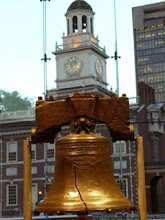
Portrait of Professor Benjamin H. Rand by Thomas EakinsThe first in a celebrated series by Thomas Eakins to focus on physicians and scientists, this magnificent portrait is on loan from
Crystal Bridges Museum of American Art. It is being shown at the Museum in context with major works by Eakins and his contemporaries, including Cecilia Beaux, Thomas Moran, and
Henry Ossawa Tanner.
New York DadaThe New York Dadaists were an eccentric, international group that gathered at the Manhattan apartment of art collectors Walter and Louise Arensberg between 1915 and 1921. Their works reflect a shared interest in everyday, readymade objects, and their impact reached far beyond their brief existence as an avant-garde group.
Ellsworth Kelly: Paris/New York, 1949–1959The paintings in this exhibition illustrate the significant changes in the work of Ellsworth Kelly during a formative period, when the artist experimented with strategies that would prove to be instrumental to his artistic development.
Presidential ChinaThe McNeil Collection of American Presidential China provides a material record of the social and cultural history of the United States. Fifty objects designed for and used by Presidents from George Washington to Ronald Reagan are on view here.
Chinese Snuff Bottles from the CollectionValued by Chinese emperors and other elites in the eighteenth century as both precious objects and as containers for powdered tobacco (snuff), these 137 snuff bottles encompass many decorative designs, including floral, figural, and landscape motifs, auspicious symbols, and poetry.
Irish SilverThe great age of domestic Irish silver began in the closing decades of the seventeenth century and lasted until the years shortly after the Act of Union of 1800, when Ireland merged with the Kingdom of Great Britain (today split into the United Kingdom of Great Britain and Northern Ireland, and the Republic of Ireland).
Ceremonial Teahouse: SunkarakuThe name of this teahouse, Sunkaraku, or "Evanescent Joys," reflects the spirit of the traditional Japanese tea ceremony as a temporary refuge from the complexities of daily life.
Constantine TapestriesThe monumental thirteen-panel tapestry set representing the "History of Constantine the Great" is one of the most intriguing masterpieces in the Philadelphia Museum of Art.
Medieval CloisterA Medieval cloister, or an arcaded walkway surrounding an open courtyard, was usually a space at the heart of a monastery where a variety of highly regulated events in the lives of members of the religious order took place, including silent prayer, meditation, or reading aloud from holy books.

